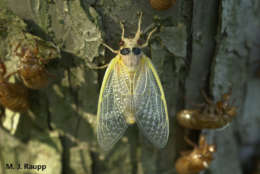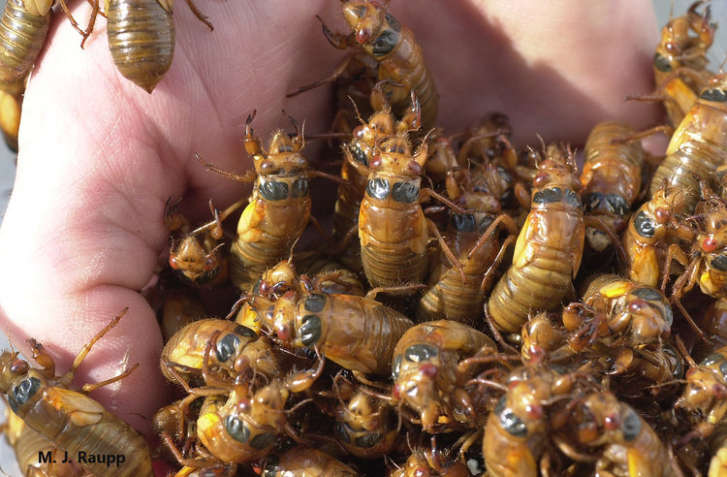Cicadas, commonly called “locusts” in the United States seem to have a calendar problem. These amazing Rip Van Winkles of the insect world spend 17 years as nymphs underground, emerge in enormous swarms, mate, and start the process all over again. The last major “brood” hatched in 2004 and the numbers reached the millions, probably billions. I can remember using the dead insects as targets for the new .17 HMR that had just introduced. That tiny round was so accurate, I could explode cicada carcassas at 50 yards. I’m not sure if that was exciting or sick… maybe too much information.
Enjoy the Sound

Some city dwellers consider the intense hum of cicada wings a nuisance, yet I can remember the first time I heard them. My father drove me to our deer hunting camp, unusual for June and the entire mountain reverberated with the sound. Some cicada species occur annually and you can often hear their unique wing beat that begins in a pulsating sound, escalated to a crescendo and abruptly ends. Multiply that sound by a million and you have a roar of wings, a sound in nature like no other.
Not Bad Bugs

Unlike the Emerald Ash Beetle that will kill millions of ash trees across the nation and cause billions in lost timber values, Cicadas don’t bite people and they don’t eat the leaves from trees like Gypsy moths that completely defoliate forests. When cicada die, they fall from their lofty tree perches and litter the ground. Some report that they make good fish bait, yet the sheer volume of bugs in the water should fill most fish completely. Since the dead creatures are expired protein, they may make good fertilizer for plants.
The first cicada swarms are just beginning to emerge and only time will tell if this is a true brood hatch or just a small population with an errant alarm clock. This post from WTOP TV in Washington DC shares more interesting details: http://wtop.com/local/2017/05/dc-area-cicadas-begin-emerge-off-schedule-appearance/slide/1/









![The Best Deer Camp Chili [VIDEO] Deer Chili Ingredients, Tomatoes, Chili Spices](/wp-content/uploads/2015/10/Deer-Chili-Deer-Camp-Recipe-218x150.jpg)








![How to Call Elk Early in the Season [VIDEO]](/wp-content/uploads/2016/08/byers003-218x150.jpg)





![Idiots Disturb Hunter: How Would You Have Handled It? [VIDEO]](/wp-content/uploads/2015/10/DSC00110-e1474487693878-100x70.jpg)
![Albino Buck Shocked to Shed His Antlers [VIDEO]](/wp-content/uploads/2015/10/AlbinoDeer-100x70.jpg)